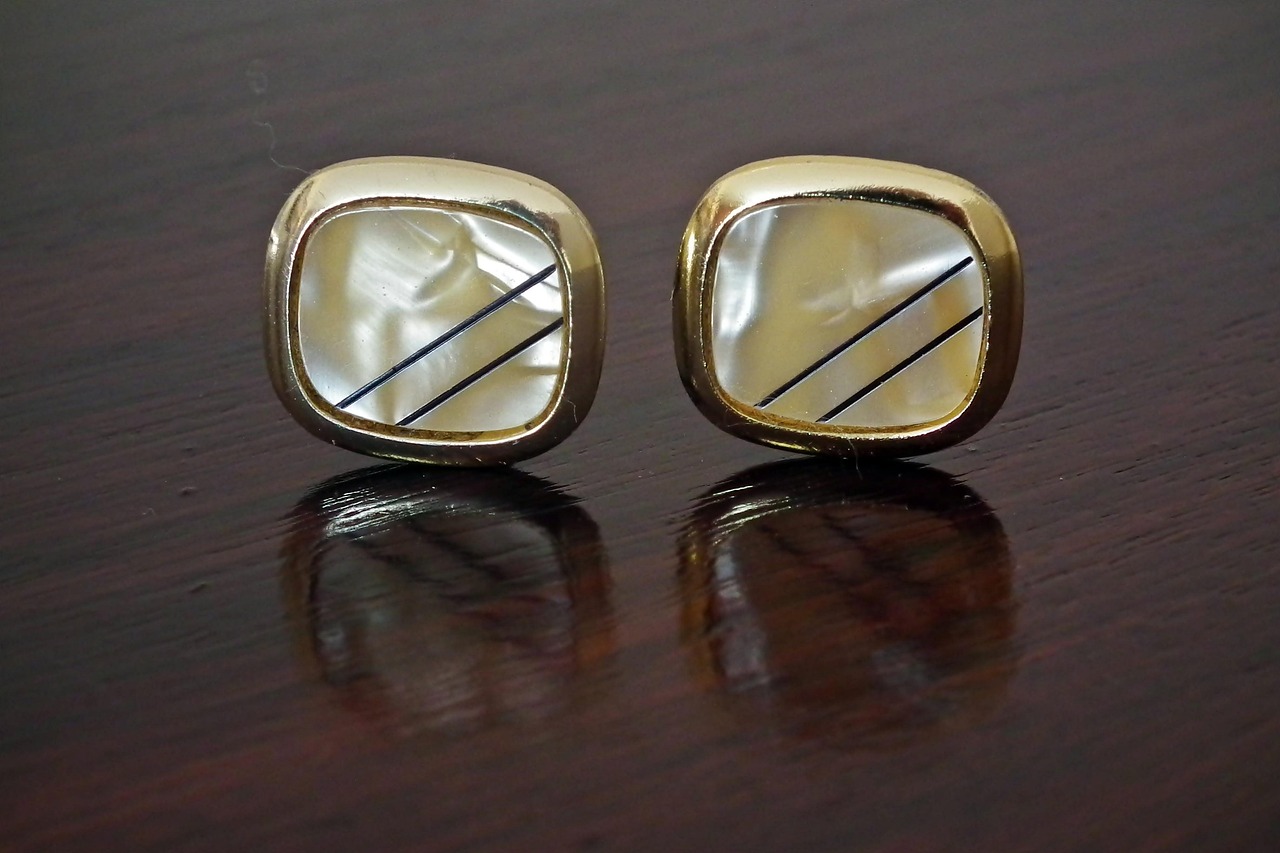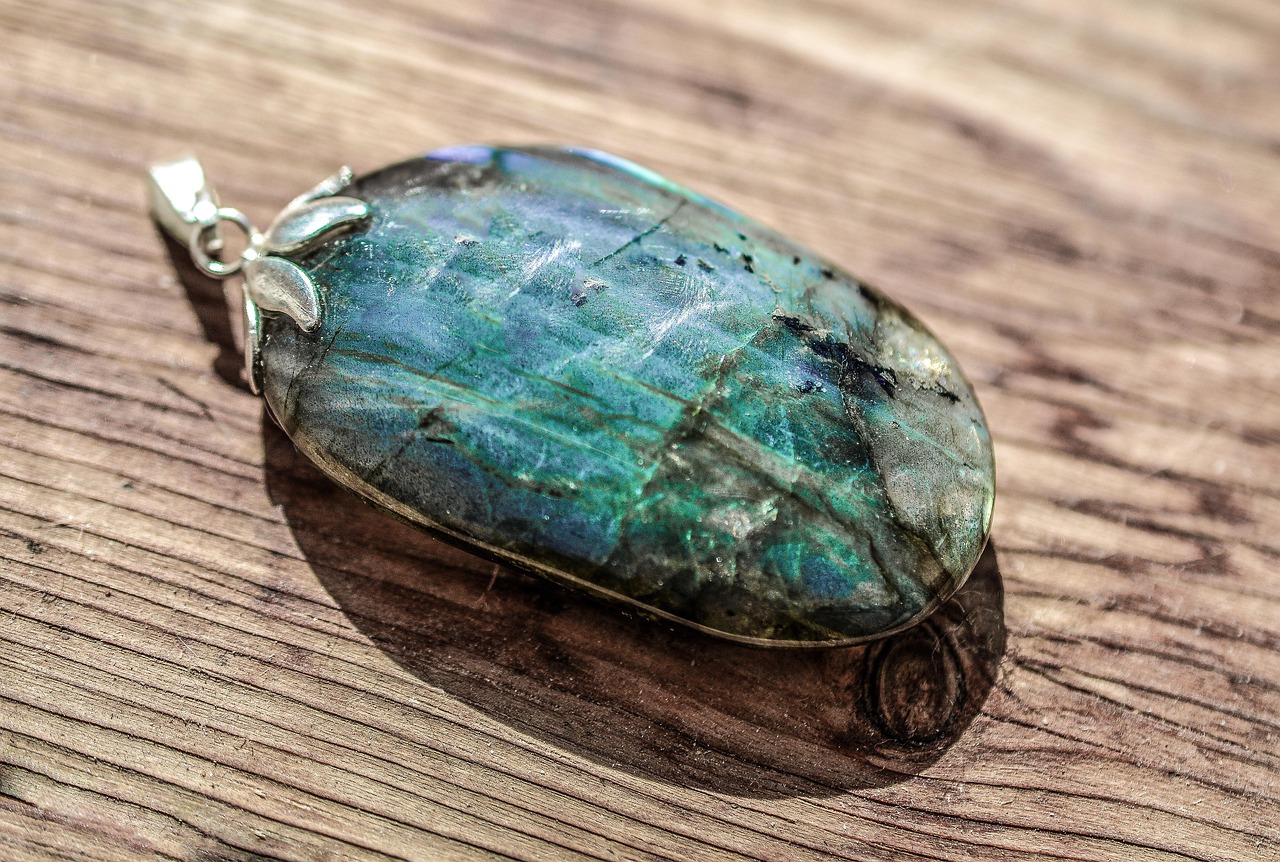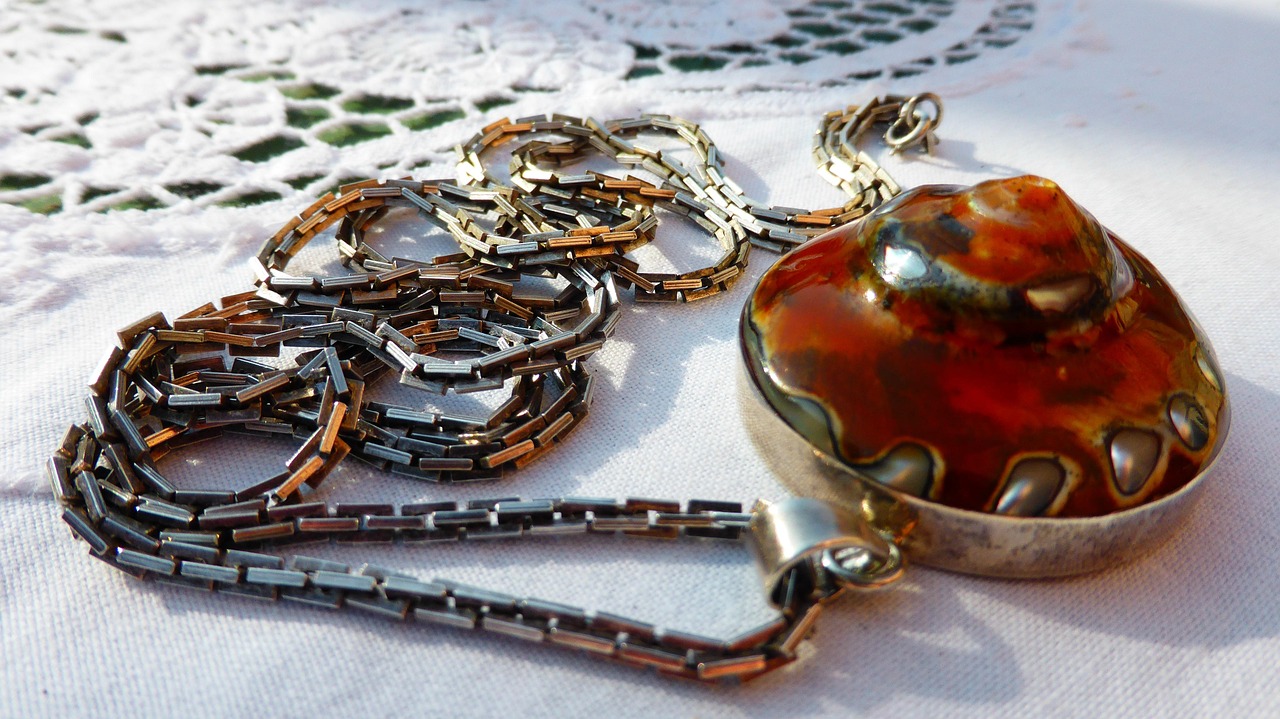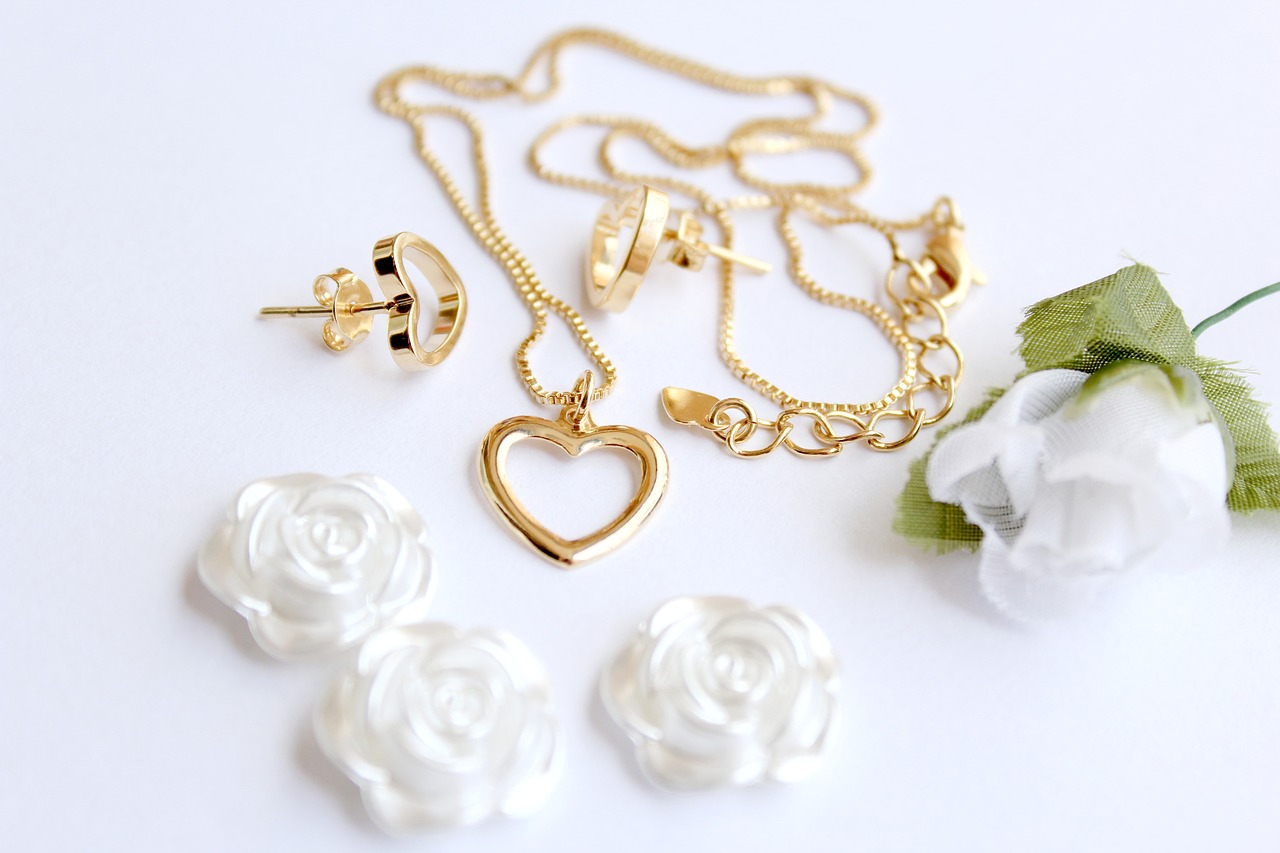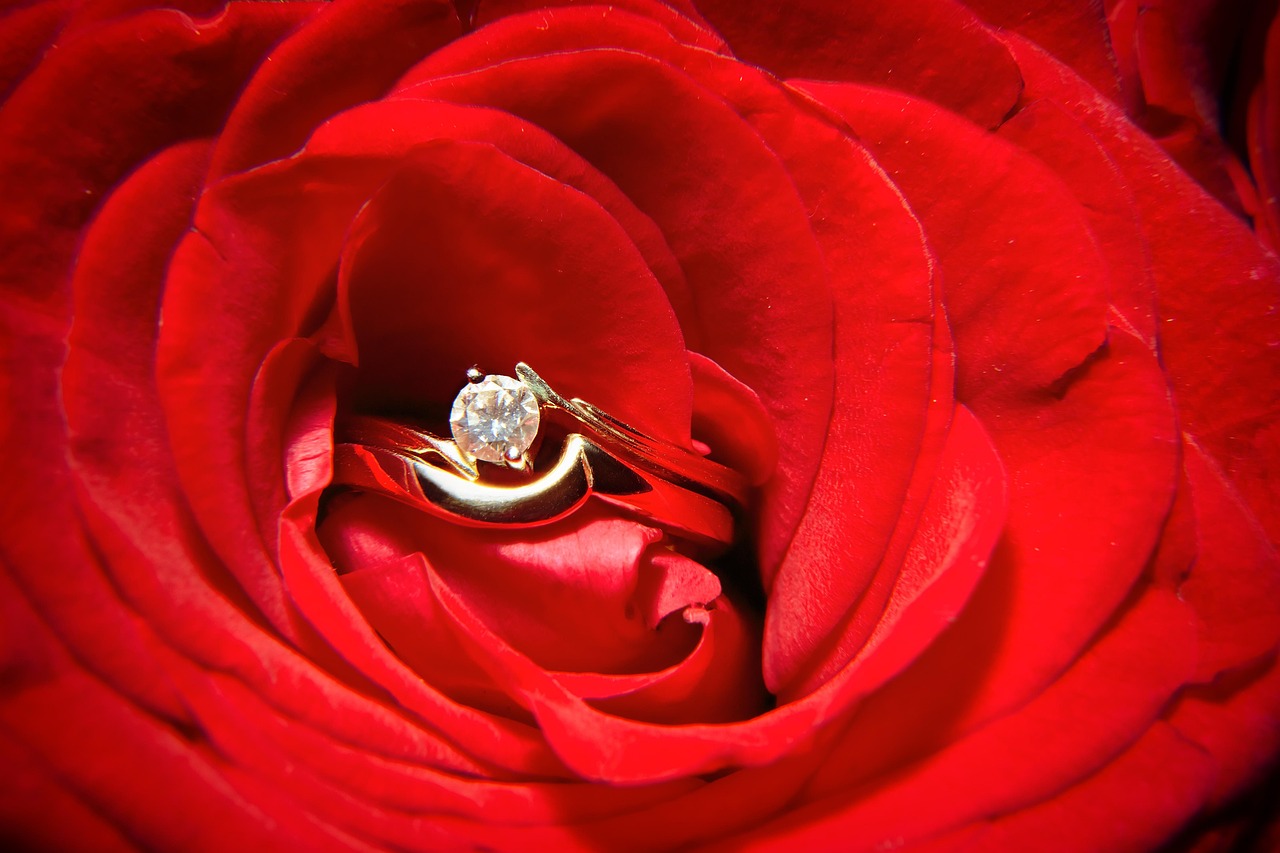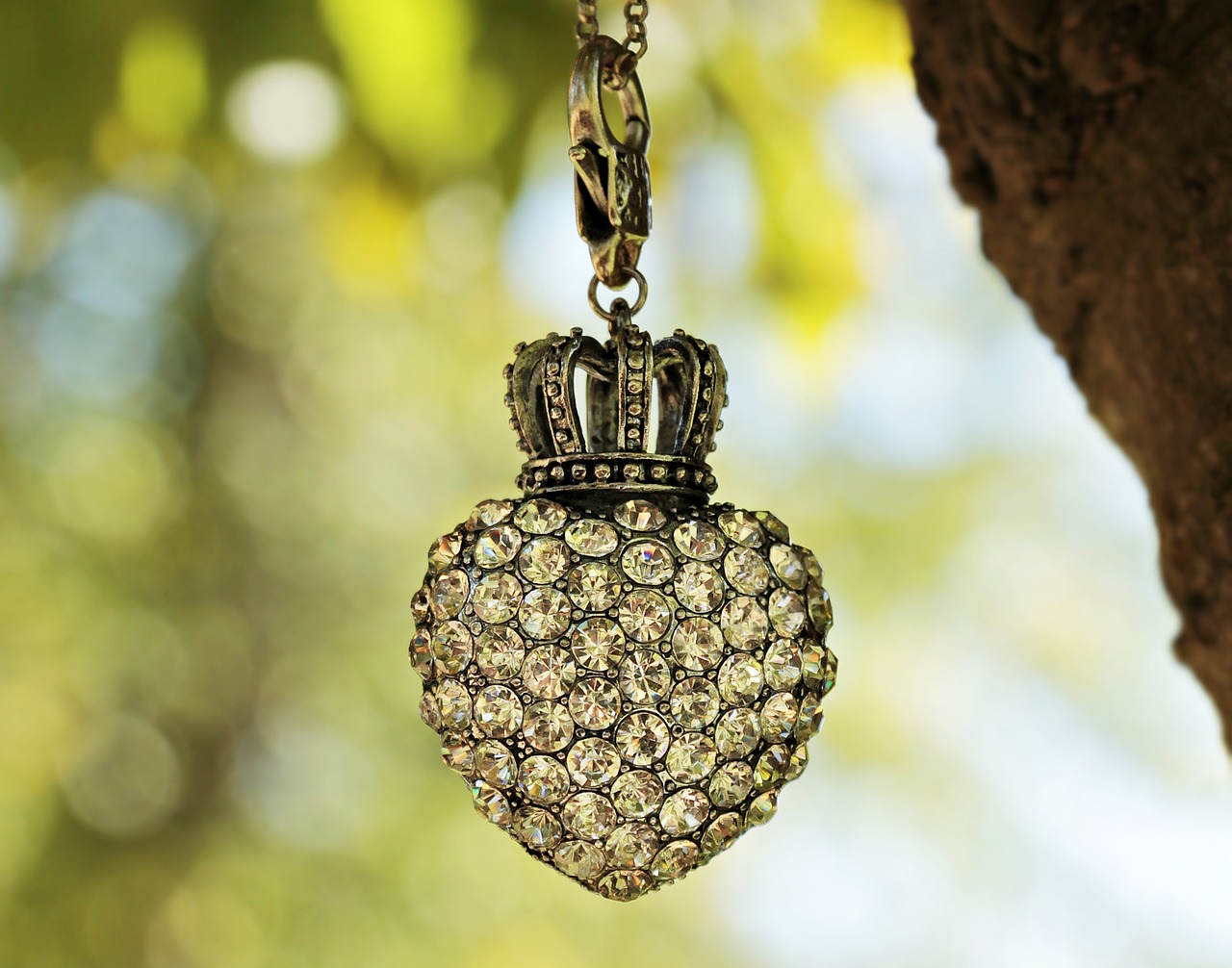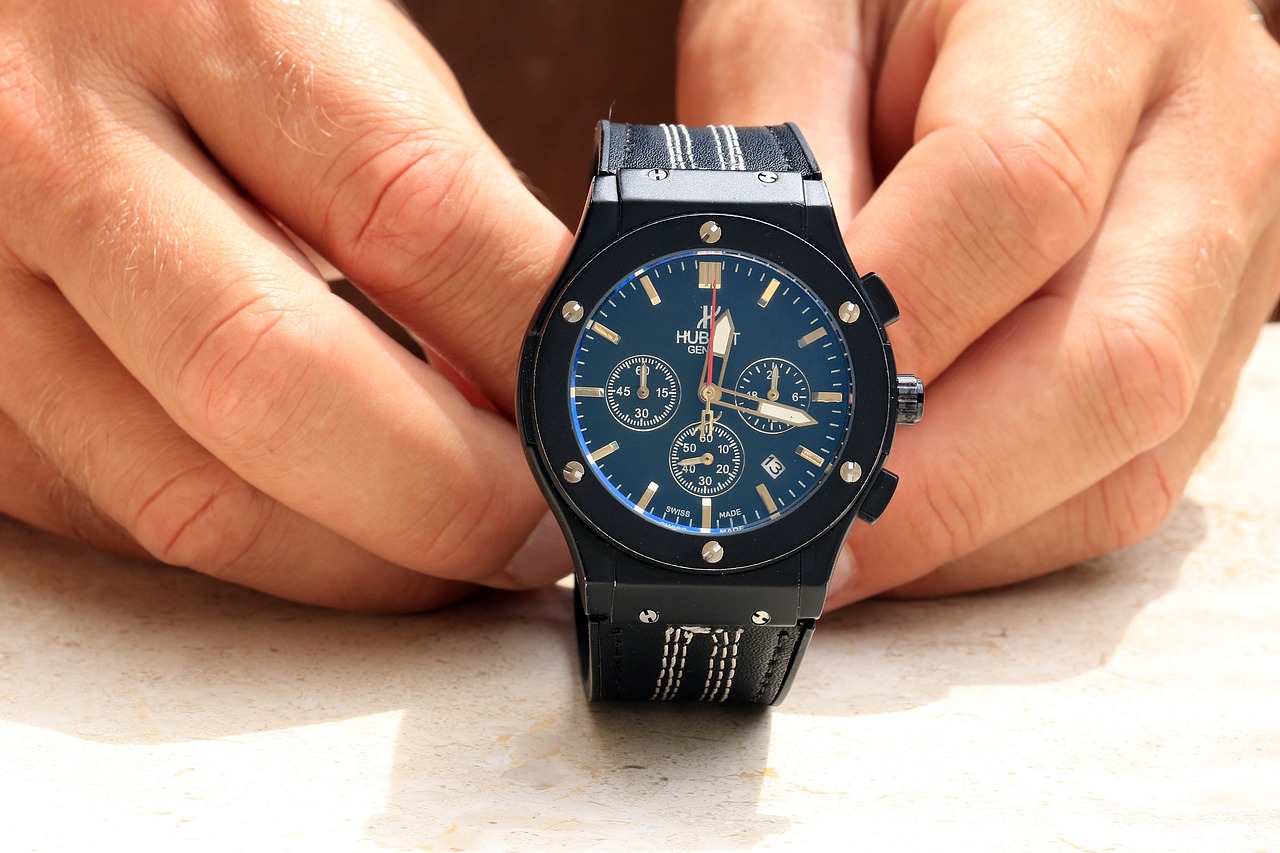This article delves into the various methods and techniques used by professional jewelers to clean and maintain jewelry, ensuring it retains its brilliance and longevity.
Professional jewelers employ a range of techniques to restore the shine of various types of jewelry effectively. These methods include:
- Ultrasonic Cleaning: This method uses high-frequency sound waves to create tiny bubbles that gently remove dirt and grime.
- Steam Cleaning: High-pressure steam is utilized to eliminate dirt, making it suitable for jewelry that can withstand heat.
- Chemical Cleaners: Specialized solutions are used to tackle stubborn stains and tarnish.
- Hand Cleaning: Jewelers may also use soft brushes and mild solutions for delicate pieces.
Ultrasonic cleaning is favored for its ability to clean intricate designs without damaging the jewelry. The process is gentle yet effective, making it ideal for:
- Rings: Especially those with multiple stones.
- Bracelets: With detailed engravings or settings.
- Earrings: Including those with delicate components.
The ultrasonic cleaning process involves immersing jewelry in a special solution. Sound waves create cavitation bubbles that collapse, dislodging contaminants from surfaces. This method ensures a deep clean, reaching areas that are difficult to access by hand.
Items like rings, bracelets, and earrings with intricate designs or settings benefit significantly from ultrasonic cleaning due to its thoroughness.
While generally safe, ultrasonic cleaning is not suitable for all gemstones and materials. Pearls and soft stones, for instance, can be damaged. Always consult a professional before using this method on delicate items.
Steam cleaning utilizes high-pressure steam to remove dirt and is often used for jewelry made from durable materials. This method is effective for:
- Gold
- Platinum
- Diamonds
Steam cleaning is particularly useful for items that can withstand heat and moisture without sustaining damage.
Sometimes, chemical cleaners are necessary to tackle stubborn stains or tarnish that cannot be removed through mechanical means alone. Jewelers use specialized solutions tailored for different metals and gemstones to ensure effectiveness without causing harm.
For those who prefer DIY methods, understanding proper dilution and application techniques is essential to avoid damaging jewelry. Always:
- Read the labels of cleaning products carefully.
- Test a small area first.
- Use soft cloths and brushes.
Polishing is a crucial step in jewelry cleaning that restores shine and removes scratches. Regular polishing can enhance the overall appearance of the piece, making it look new again.
Regular professional cleaning is recommended, usually every six months to a year, depending on wear and environmental factors. This helps maintain the jewelry’s condition and prolongs its lifespan.
While professional cleaning is ideal, simple home methods can maintain jewelry’s appearance. Common DIY methods include:
- Using mild soap and warm water.
- Employing soft brushes for intricate designs.
These methods ensure gentle yet effective cleaning.
Understanding the specific needs of different materials and avoiding harsh chemicals is vital to prevent damage during home cleaning. Always consider:
- The type of metal and gemstone.
- Using appropriate tools.
Beyond cleaning, jewelers provide services like repairs, resizing, and appraisals, which contribute to the comprehensive care of your jewelry pieces. These services ensure that your jewelry remains in excellent condition for years to come.
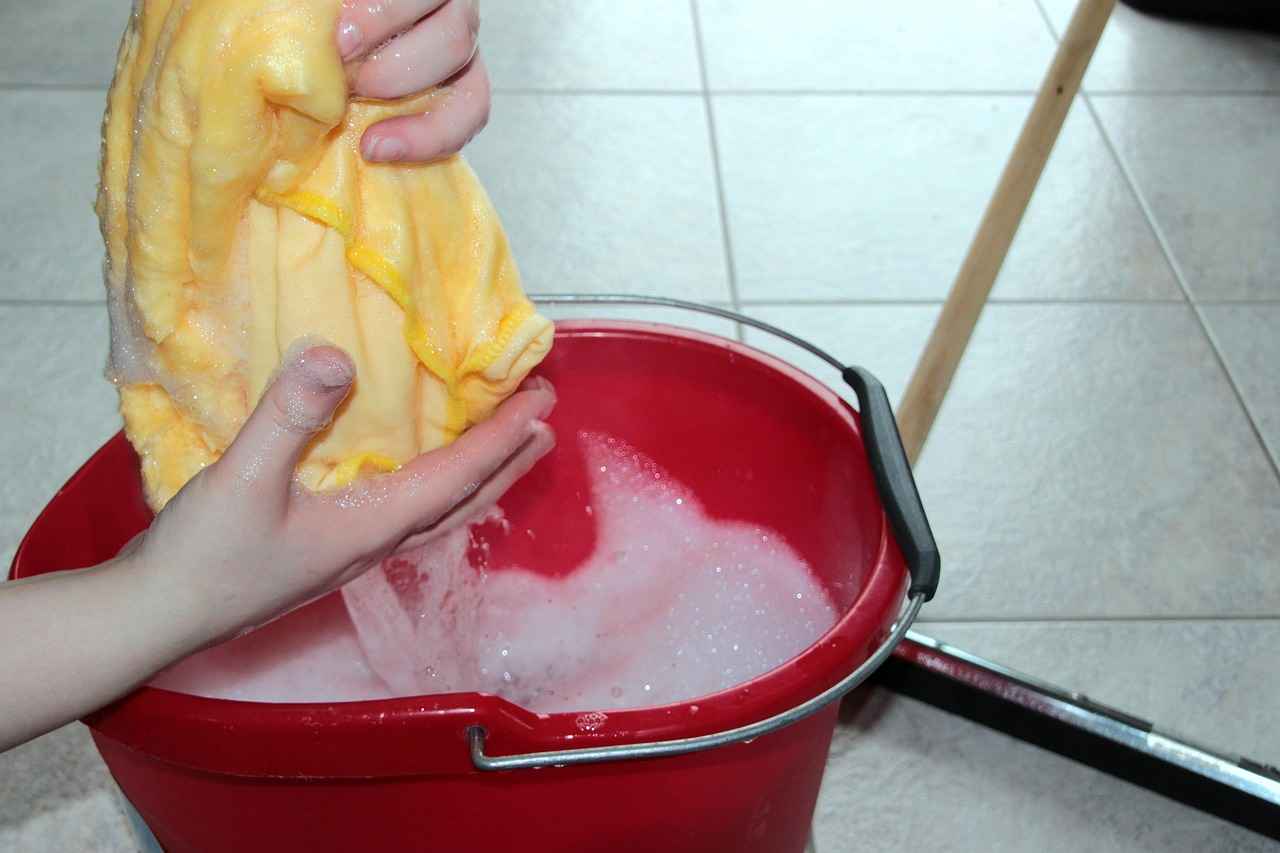
What Techniques Do Jewelers Use for Cleaning Jewelry?
Jewelry is often a cherished possession, symbolizing memories, milestones, and personal style. However, with time and wear, the luster of these pieces can diminish. To ensure that your jewelry maintains its brilliance, professional jewelers utilize a variety of specialized cleaning techniques. This article delves into the methods employed by jewelers to restore and maintain the shine of your favorite pieces.
Professional jewelers employ a range of techniques, from ultrasonic cleaners to steam cleaning, to restore the shine of various types of jewelry effectively. Each method is tailored to the specific needs of different materials and designs.
Ultrasonic cleaning is favored by jewelers because it utilizes high-frequency sound waves to create microscopic bubbles in a cleaning solution. These bubbles gently dislodge dirt and grime from the jewelry’s surface without causing damage. This method is particularly effective for intricate pieces.
The process involves immersing the jewelry in a specially formulated solution. As the sound waves pass through the liquid, they create cavitation bubbles that collapse, releasing energy that cleans the jewelry. This technique is efficient and thorough, making it ideal for items like rings, bracelets, and necklaces.
- Rings: Especially those with intricate settings.
- Bracelets: Which often accumulate dirt in crevices.
- Earrings: Particularly those with detailed designs.
While ultrasonic cleaning is generally safe, it is not suitable for all gemstones and materials. Pearls and softer stones, such as opal or turquoise, can be damaged by the vibrations and should be cleaned with caution.
Steam cleaning is another method that utilizes high-pressure steam to effectively remove dirt and debris from jewelry. This technique is often used for pieces that can withstand heat and moisture without sustaining damage.
In cases where dirt and tarnish are particularly stubborn, jewelers may resort to chemical cleaners. These specialized solutions are designed to target specific types of tarnish or stains without harming the jewelry.
Jewelers typically use cleaning solutions formulated for different metals and gemstones. For instance, a solution for gold may differ from one used for silver, ensuring effectiveness while preventing damage.
For those who prefer a DIY approach, it is essential to understand the proper dilution and application techniques when using chemical cleaners. Always read the instructions carefully to avoid damaging your jewelry.
Polishing is a crucial aspect of jewelry care, as it not only restores shine but also removes scratches, enhancing the overall appearance of the piece. Jewelers often use polishing compounds and soft cloths to achieve this effect.
To maintain the condition of your jewelry, it is recommended to have it professionally cleaned every six months to a year. This frequency can vary based on wear and environmental exposure.
While professional cleaning is ideal, there are simple methods to maintain your jewelry’s appearance at home. Using mild soap and warm water, along with soft brushes, can help keep your pieces looking their best.
When cleaning jewelry at home, it is vital to understand the specific needs of different materials. Avoid using harsh chemicals that could lead to damage, and always opt for gentle cleaning methods.
In addition to cleaning, jewelers provide a range of services including repairs, resizing, and appraisals. These services contribute to the comprehensive care of your jewelry, ensuring that it remains in excellent condition for years to come.
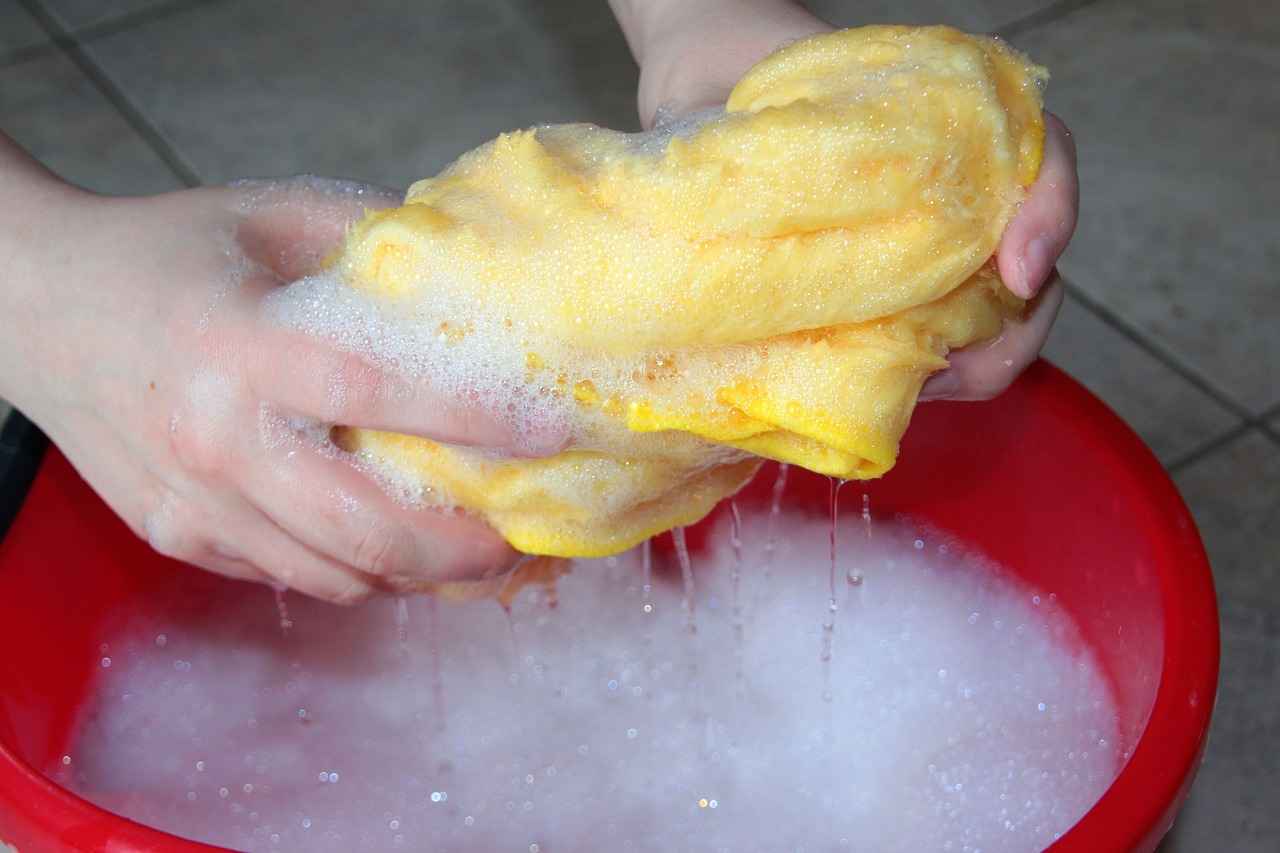
Why is Ultrasonic Cleaning Popular Among Jewelers?
Ultrasonic cleaning has emerged as a preferred method among professional jewelers for its ability to gently yet effectively clean a variety of jewelry pieces. This method utilizes high-frequency sound waves to create tiny bubbles in a cleaning solution, a process known as cavitation. As these bubbles form and collapse, they produce a scrubbing action that dislodges dirt, grime, and other contaminants from the intricate surfaces of jewelry.
The ultrasonic cleaning process begins with immersing the jewelry in a specially formulated cleaning solution. The ultrasonic cleaner generates sound waves, typically around 20-40 kHz, which create millions of microscopic bubbles. These bubbles form and implode, producing tiny shock waves that effectively remove debris from even the most delicate pieces without causing damage.
- Rings: Especially those with intricate settings or multiple stones.
- Earrings: Including those with fine detailing or small crevices.
- Bracelets: Particularly those with chains that can trap dirt.
Jewelry items with complex designs or hard-to-reach areas are ideal candidates for ultrasonic cleaning, as this method ensures a thorough clean without the need for harsh scrubbing.
While ultrasonic cleaning is generally safe for many types of jewelry, it is important to note that not all materials are suitable for this method. Pearls, soft stones like opals, and certain antique pieces may be damaged by the vibrations and heat generated during the cleaning process. Therefore, it is crucial for jewelers to assess the materials and settings of each piece before proceeding with ultrasonic cleaning.
One of the main advantages of ultrasonic cleaning is its efficiency. The process can clean multiple pieces of jewelry simultaneously, saving time and effort. Additionally, it reaches into crevices and areas that manual cleaning may miss, ensuring a comprehensive clean. This method is also environmentally friendly, as it often requires fewer harsh chemicals than traditional cleaning methods.
While ultrasonic cleaners are available for home use, it is essential to use them with caution. Home ultrasonic cleaners can be effective, but users should be aware of the materials they are cleaning and follow the manufacturer’s guidelines to avoid damaging their jewelry.
Professional jewelers not only have access to high-quality ultrasonic cleaning machines but also possess the experience necessary to evaluate each piece of jewelry properly. They can determine the best cleaning solutions and settings for different materials, ensuring optimal results without risk of damage.
In summary, ultrasonic cleaning is a highly effective and popular method among jewelers for maintaining the beauty and integrity of jewelry. By utilizing sound waves to create a gentle yet powerful cleaning action, this technique ensures that even the most delicate pieces can be restored to their original brilliance.
How Does Ultrasonic Cleaning Work?
Ultrasonic cleaning is a highly effective method used by professional jewelers to restore the sparkle and shine of jewelry. This innovative technique utilizes high-frequency sound waves to create a cleaning process that is both efficient and gentle on delicate items. In this article, we will delve deeper into the mechanics of ultrasonic cleaning, its benefits, and the types of jewelry that benefit most from this method.
The ultrasonic cleaning process begins with the jewelry being immersed in a specially formulated cleaning solution. This solution is designed to be gentle on the jewelry while effectively breaking down dirt, grease, and grime. When ultrasonic waves are introduced into the solution, they create cavitation bubbles. These bubbles form and collapse rapidly, producing tiny shockwaves that dislodge contaminants from the surface of the jewelry.
The effectiveness of ultrasonic cleaning lies in its ability to reach intricate details and hard-to-reach areas of jewelry. The cavitation bubbles can penetrate even the smallest crevices, ensuring a thorough clean that traditional cleaning methods may miss. This is particularly beneficial for items with intricate designs, such as engagement rings or charm bracelets.
- Rings: Especially those with multiple stones or detailed settings.
- Earrings: Including studs and hoops that may accumulate dirt over time.
- Bracelets: Particularly those with intricate chains or charms.
While ultrasonic cleaning is generally safe, it is crucial to note that not all jewelry is suitable for this method. Certain materials, such as pearls, soft stones, or items with loose settings, may be damaged during the process. Therefore, it is essential to consult with a professional jeweler before subjecting valuable pieces to ultrasonic cleaning.
For those who wear their jewelry regularly, ultrasonic cleaning can be performed every six months to a year to maintain its brilliance. However, for items that are worn less frequently, a thorough cleaning may be sufficient during seasonal changes or special occasions.
While professional ultrasonic cleaning services are recommended for the best results, some individuals may consider purchasing a home ultrasonic cleaner. These devices are available for personal use and can effectively clean jewelry at home. However, it is vital to follow the manufacturer’s instructions and to ensure that the jewelry being cleaned is suitable for ultrasonic cleaning.
In summary, ultrasonic cleaning is a powerful technique that can significantly enhance the appearance of your jewelry. By understanding the process and its benefits, you can make informed decisions about maintaining your treasured pieces. Always consult with a professional jeweler to ensure the safety and longevity of your jewelry items.
What Types of Jewelry Benefit Most from Ultrasonic Cleaning?
Ultrasonic cleaning has revolutionized the way jewelry is maintained, particularly for intricate items. This method is especially beneficial for various types of jewelry, including rings, bracelets, and earrings. These items often feature detailed designs and settings that can trap dirt and grime, making them challenging to clean using traditional methods.
Rings, especially those adorned with gemstones, benefit significantly from ultrasonic cleaning. The tiny bubbles created during the process can reach into the crevices of settings, removing accumulated dirt without damaging the piece itself. This is crucial for maintaining the clarity and brilliance of the stones.
Bracelets, particularly those with intricate links and clasps, can accumulate dirt between their components. Ultrasonic cleaners effectively dislodge this buildup, ensuring that every part shines. The gentle yet thorough cleaning process preserves the bracelet’s finish and prevents wear over time.
Earrings, especially those with delicate designs or multiple stones, are also excellent candidates for ultrasonic cleaning. The method ensures that all parts of the earring, including backs and settings, are thoroughly cleaned without the risk of scratching or damaging the material.
While ultrasonic cleaning is effective for many types of jewelry, it is essential to note that not all pieces are suitable for this method. Jewelry featuring soft stones such as pearls, opals, or turquoise may be damaged by the vibrations and should be cleaned using gentler methods. Jewelers often recommend alternative cleaning techniques for these materials to ensure their longevity.
In addition to soft stones, jewelry with loose settings or damaged components should not undergo ultrasonic cleaning. The process could exacerbate existing issues, leading to further damage or loss of stones. For such pieces, professional jewelers may suggest hand cleaning or other methods that do not involve high-frequency vibrations.
The effectiveness of ultrasonic cleaning also depends on the cleaning solution used. Jewelers typically use specialized solutions that are safe for various metals and gemstones. These solutions enhance the cleaning process by breaking down oils and grime, allowing the ultrasonic waves to do their job more effectively.
For optimal maintenance, it is recommended that jewelry be cleaned using ultrasonic methods every six months to a year, depending on wear and exposure to environmental factors. Regular cleaning not only keeps the jewelry looking its best but also helps identify any potential issues early on.
In conclusion, ultrasonic cleaning stands out as a highly effective method for maintaining the beauty and integrity of jewelry, particularly for items with intricate designs. By understanding which pieces benefit most from this technique, jewelry owners can make informed decisions that enhance the longevity and appearance of their cherished items.
Are There Any Risks with Ultrasonic Cleaning?
When it comes to maintaining the beauty and integrity of your jewelry, ultrasonic cleaning is a popular choice among professional jewelers. However, it’s essential to understand that while this method is generally safe, it is not suitable for all types of gemstones and materials. In this section, we will explore the risks associated with ultrasonic cleaning and what precautions should be taken.
Ultrasonic cleaning employs high-frequency sound waves to create microscopic bubbles in a cleaning solution. These bubbles collapse and dislodge dirt and grime from the jewelry’s surface. However, this method can pose risks to certain materials:
- Pearls: These delicate gems are particularly vulnerable. The intense vibrations can cause nacre damage, leading to dullness or even cracks.
- Soft Stones: Gemstones like opal, turquoise, and lapis lazuli can be easily scratched or chipped by the ultrasonic process, diminishing their natural beauty.
- Porous Stones: Stones such as amber and coral can absorb cleaning solutions, leading to potential discoloration or damage.
- Loose Settings: If a gemstone is not securely set, the vibrations may loosen it further, increasing the risk of loss.
Before subjecting your jewelry to ultrasonic cleaning, consider the following:
- Identify the Materials: Know the composition of your jewelry. Consult with a jeweler if you’re uncertain.
- Check for Damage: Inspect the piece for any existing damage or loose stones that could worsen during the cleaning process.
- Consult Professionals: When in doubt, always seek the advice of a professional jeweler who can provide tailored recommendations.
If your jewelry contains materials that are not suitable for ultrasonic cleaning, consider these alternatives:
- Steam Cleaning: This method uses high-pressure steam to remove dirt without the risks associated with ultrasonic cleaning. It is effective for many types of jewelry but may not be suitable for heat-sensitive materials.
- Hand Cleaning: Using a soft brush and a mild soap solution can effectively clean delicate pieces without the risk of damage.
- Professional Cleaning: Regular visits to a jeweler for professional cleaning can help maintain your jewelry’s appearance while ensuring that appropriate methods are used.
If you decide to use an ultrasonic cleaner, follow these precautions:
- Read the Manufacturer’s Instructions: Ensure you understand the specific settings and recommended cleaning solutions for your device.
- Use Appropriate Cleaning Solutions: Only use cleaning solutions that are safe for the materials of your jewelry.
- Limit Cleaning Time: Avoid prolonged exposure to ultrasonic waves, as this can increase the risk of damage.
In summary, while ultrasonic cleaning is a highly effective method for many jewelry types, it is crucial to recognize its limitations. Understanding the materials involved and consulting with professionals can help you maintain your jewelry’s beauty while avoiding potential damage. By taking the necessary precautions, you can enjoy sparkling jewelry without compromising its integrity.
What is Steam Cleaning and When is it Used?
Steam cleaning is a highly effective method used by professional jewelers to maintain the brilliance and integrity of various jewelry pieces. This technique employs high-pressure steam to dislodge dirt, grime, and other contaminants without the use of harsh chemicals. It is particularly beneficial for jewelry that can withstand both heat and moisture, ensuring that even the most intricate designs are thoroughly cleaned.
The process of steam cleaning involves directing a concentrated stream of steam onto the jewelry surface. This steam penetrates even the tiniest crevices, loosening dirt and debris that may have accumulated over time. The high temperature of the steam not only helps to remove stubborn stains but also sanitizes the jewelry, killing bacteria and other pathogens that may be present.
- Gold and Platinum: These metals are resistant to tarnishing and can handle the heat without damage.
- Diamonds: Their hardness allows them to withstand high-pressure steam without scratching.
- Other Hard Gemstones: Gemstones like sapphires and rubies can typically endure the steam cleaning process.
However, it is essential to note that steam cleaning is not suitable for all types of jewelry. Soft stones such as pearls, opals, and turquoise may be damaged by the heat and moisture, making alternative cleaning methods more appropriate for these materials.
- Deep Cleaning: The method effectively removes dirt and grime from hard-to-reach areas.
- Eco-Friendly: Since it primarily uses water, steam cleaning is a more environmentally friendly option compared to chemical cleaners.
- Time-Efficient: The process is quick, allowing jewelers to clean multiple pieces in a short period.
Steam cleaning is often recommended for jewelry that has not been cleaned for a while or when preparing for special occasions. Regular maintenance through steam cleaning can help in preserving the jewelry’s shine and overall condition. Jewelers typically suggest having your pieces professionally cleaned every six months to a year, depending on how frequently they are worn.
While professional jewelers have specialized equipment for steam cleaning, there are also home steam cleaners available for personal use. However, caution is advised. It is crucial to ensure that the jewelry is compatible with steam cleaning before attempting it at home. Always consult with a professional if unsure, as improper use can lead to damage.
In summary, steam cleaning is a powerful tool in the jewelry cleaning arsenal, effectively restoring the shine and integrity of various pieces. Understanding which items benefit most from this method and when to utilize it can help maintain your jewelry’s beauty for years to come.

Why Do Jewelers Use Chemical Cleaners?
Jewelry cleaning is an essential aspect of maintaining the beauty and integrity of your cherished pieces. While mechanical cleaning methods like ultrasonic and steam cleaning are widely used, chemical cleaners play a significant role in the jewelry care process. This section delves into the reasons why jewelers opt for chemical cleaners and how they can effectively tackle stubborn stains and tarnish.
Chemical cleaners are sometimes employed to tackle stubborn stains or tarnish that cannot be removed through mechanical means alone. These cleaners are formulated to dissolve dirt, grease, and oxidation that may accumulate over time, especially on intricate jewelry designs. They allow jewelers to restore the original luster of pieces that may appear dull or tarnished.
- Ammonia-Based Solutions: These are effective for cleaning silver and gold jewelry, as they can cut through tarnish and restore shine.
- Acidic Cleaners: Jewelers may use mild acids to remove mineral deposits and stains from certain gemstones and metals.
- Specialized Jewelry Cleaners: Many jewelers use proprietary cleaning solutions that are specifically designed for different types of metals and gemstones, ensuring safe and effective cleaning.
The effectiveness of chemical cleaners lies in their ability to break down complex compounds. For instance, ammonia-based solutions can react with tarnish on silver, converting it back to its shiny state. Similarly, acidic cleaners can dissolve mineral deposits that accumulate on gemstones, enhancing their clarity and brilliance.
- Targeted Cleaning: Chemical cleaners can penetrate hard-to-reach areas, making them ideal for intricate designs.
- Time Efficiency: They often work faster than mechanical methods, allowing jewelers to clean multiple pieces in a shorter time frame.
- Restoration of Original Appearance: These cleaners can effectively restore the original look of jewelry that has lost its shine due to tarnish or grime.
While chemical cleaners can be highly effective, it is crucial to use them with care. Jewelers must consider the material of the jewelry being cleaned. For example, certain gemstones like pearls or opals can be damaged by harsh chemicals. Additionally, proper dilution and application techniques are essential to avoid damaging the jewelry.
For those who prefer a DIY approach, understanding the correct usage of chemical cleaners is vital. Always read the instructions carefully and ensure the cleaner is suitable for the specific type of jewelry. It is advisable to test the cleaner on a small, inconspicuous area first. Furthermore, wearing gloves and working in a well-ventilated area can help ensure safety during the cleaning process.
While chemical cleaners are effective, there are also natural alternatives that can be used for cleaning jewelry. For instance, a mixture of warm water and mild soap can be a gentle yet effective solution for routine cleaning. Baking soda and vinegar can also work wonders for certain types of tarnish, providing a less abrasive option.
In summary, chemical cleaners are a valuable tool in a jeweler’s arsenal, offering effective solutions for stubborn stains and tarnish. By understanding their uses, benefits, and precautions, both professional jewelers and jewelry owners can maintain the beauty and longevity of their treasured pieces.
What Types of Chemical Cleaners Are Commonly Used?
When it comes to maintaining the beauty and integrity of jewelry, jewelers often turn to chemical cleaners as an essential tool in their arsenal. These specialized solutions are designed to target specific types of metals and gemstones, ensuring that they effectively remove dirt, grime, and tarnish without causing any harm. Understanding the types of chemical cleaners commonly used can help you appreciate the care taken in professional jewelry cleaning.
Jewelers utilize a variety of chemical cleaners, each formulated for specific materials. Here are some of the most common types:
- Ammonia-Based Cleaners: Often used for gold and silver, these cleaners are effective at breaking down oils and residues. However, they should be used with caution, as prolonged exposure can damage softer stones.
- Acidic Cleaners: These are typically used for removing tarnish from metals like copper and brass. Jewelers must ensure that these cleaners do not come into contact with sensitive gemstones.
- Enzymatic Cleaners: These cleaners contain enzymes that break down organic material, making them ideal for cleaning jewelry that has accumulated body oils or lotions. They are gentle and safe for most gemstones.
- Non-Abrasive Creams: Used primarily for polishing, these creams can enhance the shine of metals without scratching the surface. They are suitable for a variety of metals and can be used at home with care.
Choosing the right cleaner is crucial for maintaining the integrity of the jewelry. Jewelers consider several factors:
- Material Composition: Different metals and stones react differently to various chemicals. Jewelers must be knowledgeable about which cleaners are safe for specific materials.
- Type of Dirt or Stain: The nature of the stain or buildup can influence the choice of cleaner. For example, tarnish may require a different approach than dirt or oil.
- Jewelry Design: Intricate designs may require more delicate cleaning methods to avoid damaging settings or stones.
While chemical cleaners can be highly effective, there are inherent risks involved:
- Potential Damage: Some cleaners can be too harsh for certain gemstones, leading to discoloration or physical damage.
- Improper Use: If not diluted or applied correctly, even mild cleaners can cause issues. Jewelers follow strict guidelines to ensure safe usage.
- Environmental Concerns: Many chemical cleaners can be harmful to the environment if not disposed of properly. Jewelers often seek eco-friendly options.
If you choose to clean your jewelry at home, it’s essential to follow certain guidelines:
- Read Labels: Always check the manufacturer’s recommendations for each cleaner to ensure compatibility with your jewelry.
- Test First: If trying a new cleaner, test it on a small, inconspicuous area first.
- Use in a Well-Ventilated Area: Many chemical cleaners have strong fumes, so ensure good ventilation during use.
By understanding the types of chemical cleaners used by jewelers and how to use them safely, you can help maintain the beauty of your jewelry while avoiding potential damage. Whether you opt for professional cleaning or choose to tackle it yourself, knowledge is key to ensuring your treasured pieces remain stunning for years to come.
How to Safely Use Chemical Cleaners at Home?
When it comes to maintaining the beauty and integrity of your jewelry, understanding how to safely use chemical cleaners at home is crucial. Many individuals prefer DIY methods for convenience and cost-effectiveness, but improper use can lead to irreversible damage. Therefore, it’s essential to grasp the proper dilution and application techniques to ensure your jewelry remains in pristine condition.
Chemical cleaners are formulated to tackle stubborn stains, tarnish, and dirt that regular cleaning methods may not remove. These cleaners can be highly effective, but they also require careful handling. Always read the labels and understand the components of the cleaner you are using.
- Material Compatibility: Ensure the cleaner is suitable for the type of metal and gemstones in your jewelry. Some cleaners can be too harsh for delicate materials.
- pH Balance: A pH-balanced cleaner is less likely to cause damage, making it a safer choice for most jewelry.
- Non-Abrasive Formula: Choose a cleaner that is specifically designed for jewelry to avoid scratches and other physical damage.
Proper dilution is key to safe cleaning. Follow these steps:
1. Read the manufacturer’s instructions carefully.2. Use a measuring spoon or cup to ensure accurate dilution.3. Mix the cleaner with water in a separate container, typically following a 1:3 ratio (one part cleaner to three parts water).4. Test the diluted solution on a small, inconspicuous area before applying it to the entire piece.
Once your cleaner is diluted, you can apply it safely:
- Use a Soft Cloth: Dampen a soft, lint-free cloth with the diluted solution and gently wipe the jewelry.
- Soft Brush: For intricate designs, a soft-bristled brush can help reach nooks and crannies. Be gentle to avoid scratching.
- Soaking Method: For heavily tarnished items, soak them in the diluted solution for a short period (no more than 10 minutes) before rinsing thoroughly.
To ensure a safe cleaning experience, consider the following precautions:
- Ventilation: Always work in a well-ventilated area to avoid inhaling fumes.
- Protective Gear: Wear gloves to protect your skin from irritation and avoid contact with eyes.
- Rinse Thoroughly: After cleaning, rinse your jewelry under lukewarm water to remove any chemical residue.
- Drying: Use a soft cloth to dry your jewelry completely before storing it.
To prevent damage, steer clear of:
- Harsh Chemicals: Avoid bleach, ammonia, or other strong chemicals that can damage jewelry.
- Over-Soaking: Prolonged soaking can weaken certain materials, leading to breakage.
- Improvised Solutions: Never use household cleaners not designed for jewelry, as they may contain harmful ingredients.
By following these guidelines, you can safely use chemical cleaners at home to maintain the beauty of your jewelry. Remember to always prioritize safety and the specific needs of your pieces to ensure they remain stunning for years to come.
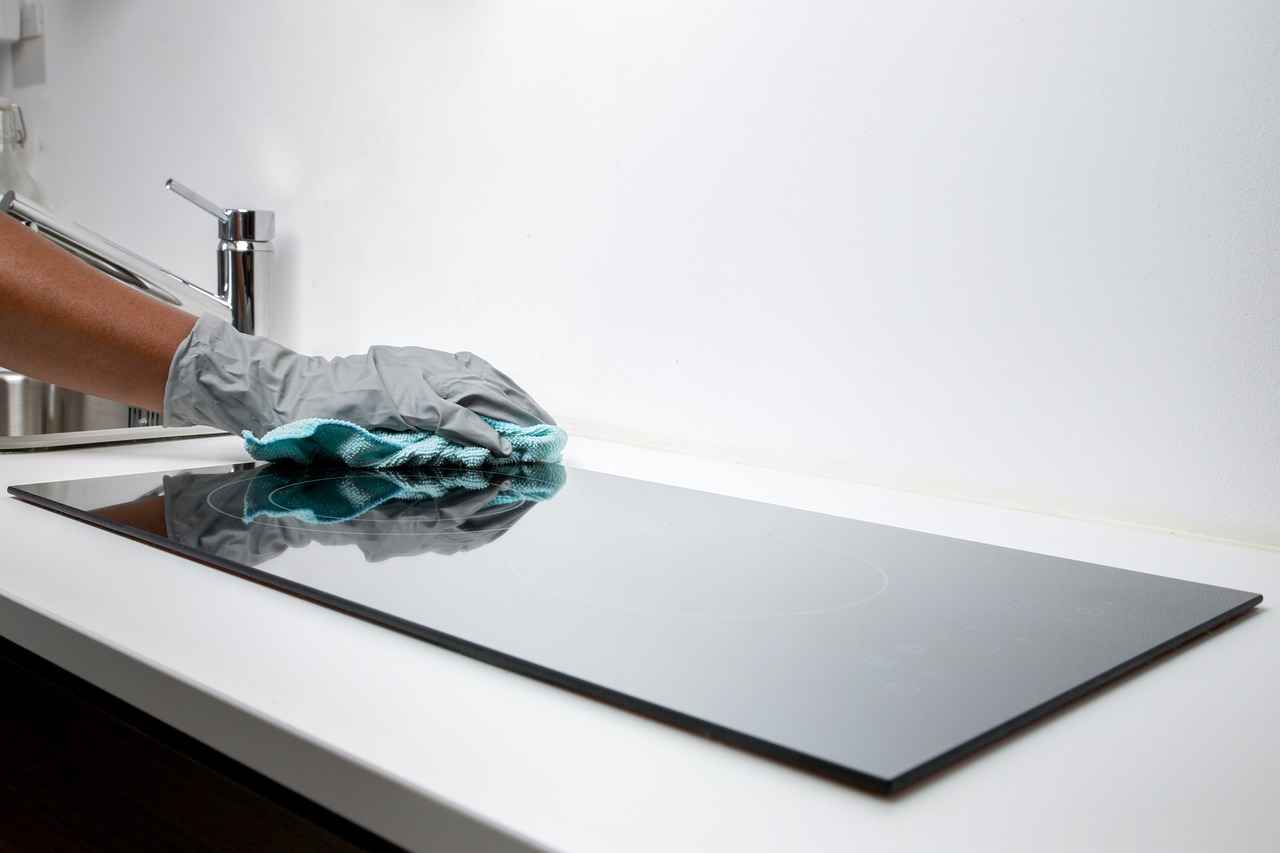
What Role Does Polishing Play in Jewelry Maintenance?
Polishing is an essential aspect of jewelry maintenance that goes beyond mere aesthetics. It plays a vital role in preserving the beauty and integrity of your cherished pieces. Over time, jewelry can accumulate scratches, tarnish, and dullness, which can detract from its overall appearance. By incorporating polishing into your regular cleaning routine, you can effectively restore the shine and luster of your favorite items.
When it comes to polishing, jewelers often use specialized tools and techniques designed to cater to different types of metals and gemstones. This process not only removes surface scratches but also enhances the reflective quality of the jewelry, making it appear as if it were brand new. For instance, gold and silver jewelry benefit immensely from polishing, as these metals are more prone to scratches due to their softness.
Furthermore, polishing can help in eliminating tarnish, which is a common issue for silver jewelry. Tarnish occurs when silver reacts with sulfur in the air, resulting in a dull and discolored surface. Regular polishing can effectively remove this tarnish, allowing the natural beauty of the metal to shine through.
In addition to aesthetic benefits, polishing also serves a protective function. By smoothing out scratches and imperfections, polishing can help prevent further damage to the jewelry. This is particularly important for pieces that are worn frequently, as they are more susceptible to wear and tear.
Many professional jewelers offer polishing services as part of their cleaning packages. These services often involve the use of buffing wheels and polishing compounds that are specifically formulated for different materials. For instance, a jeweler may use a softer compound for delicate gemstones to avoid causing any damage while still achieving a brilliant shine.
For those who prefer to maintain their jewelry at home, there are safe and effective methods for polishing as well. Using a soft, lint-free cloth can help in gently buffing the surface of the jewelry. Additionally, there are commercial polishing cloths available that contain special compounds designed to enhance shine while protecting the metal.
However, it’s important to note that not all jewelry should be polished at home. Some pieces, especially those with intricate designs or delicate stones, may require professional attention to avoid damage. Always consider the specific needs of your jewelry before attempting any DIY polishing methods.
In summary, polishing is a crucial step in jewelry maintenance that not only restores shine and removes scratches but also enhances the overall appearance of your pieces. Regular polishing can extend the life of your jewelry, keeping it looking beautiful for years to come. Whether you choose to visit a professional jeweler or opt for home methods, incorporating polishing into your jewelry care routine is essential for maintaining the brilliance and integrity of your treasured items.
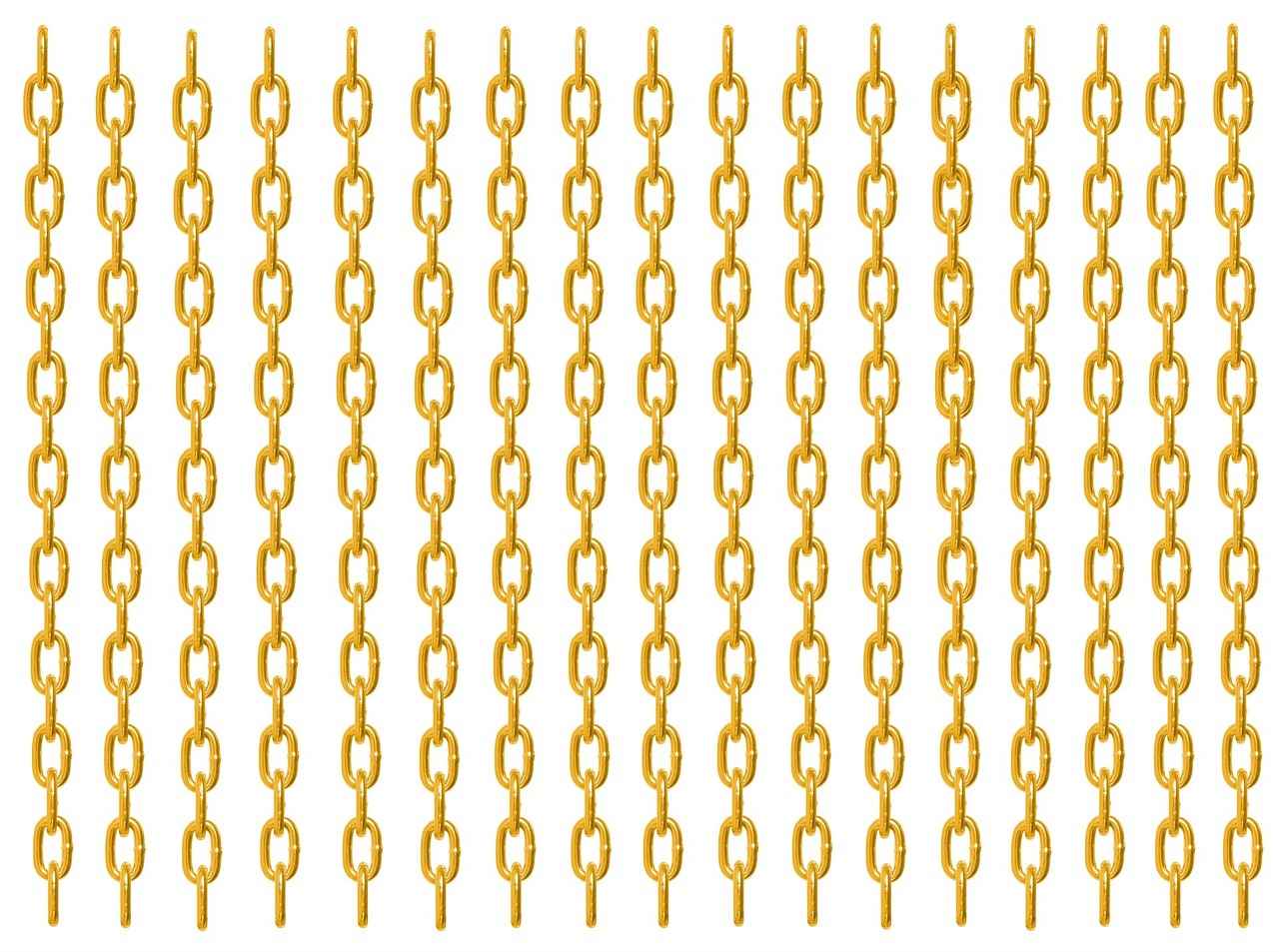
How Often Should You Have Your Jewelry Professionally Cleaned?
When it comes to maintaining the beauty and integrity of your jewelry, regular professional cleaning is essential. This practice not only preserves the appearance of your cherished pieces but also extends their lifespan. Generally, it is recommended to have your jewelry professionally cleaned every six months to a year, depending on various factors such as wear and environmental conditions. This article will delve deeper into the reasons behind this recommendation and the benefits of professional cleaning.
Jewelry often accumulates dirt, oils, and grime from daily wear, which can dull its shine. Over time, these residues can lead to tarnishing and even damage to the materials. Regular cleaning helps to:
- Maintain Sparkle: Professional cleaning restores the original luster of your jewelry, making it look as brilliant as the day you bought it.
- Prevent Damage: Regular maintenance can help identify issues such as loose stones or weak clasps before they become major problems.
- Enhance Longevity: By investing in professional cleaning, you ensure that your jewelry remains in excellent condition for years to come.
The frequency of professional cleaning can vary based on several key factors:
- Type of Jewelry: Rings, necklaces, and bracelets may require different cleaning schedules. For example, rings that are worn daily often need more frequent attention.
- Environmental Exposure: Jewelry worn in harsh environments, such as during exercise or in the presence of chemicals, may need more frequent cleaning.
- Material Composition: Different materials react differently to wear and tear. For instance, softer metals and porous gemstones may tarnish or scratch more easily.
While regular intervals are a good guideline, sometimes your jewelry will show signs that it needs immediate attention:
- Dull Appearance: If your jewelry looks lackluster or dirty, it’s time for a professional clean.
- Visible Dirt or Grime: If you can see buildup on your jewelry, especially in intricate designs, a professional cleaning will help.
- Loose Stones: If you notice any stones that seem to be shifting, it’s crucial to have the piece examined and cleaned immediately.
During a professional cleaning session, jewelers utilize advanced techniques to ensure your pieces are thoroughly cleaned:
- Ultrasonic Cleaning: This method uses high-frequency sound waves to remove dirt from hard-to-reach areas.
- Steam Cleaning: High-pressure steam is used to eliminate dirt without harsh chemicals, preserving the integrity of your jewelry.
- Polishing: Jewelers often polish pieces to remove scratches and restore shine.
While professional cleaning is highly recommended, you can maintain your jewelry’s appearance at home using gentle methods. Simple solutions like mild soap and warm water can help, but it’s essential to know:
- Material Considerations: Not all jewelry is suitable for home cleaning methods. Always check the material before attempting to clean.
- Avoiding Harsh Chemicals: Stay away from abrasive cleaners that could scratch or damage your jewelry.
In summary, regular professional cleaning is vital for maintaining the beauty and integrity of your jewelry. By adhering to a cleaning schedule based on wear and environmental factors, you can ensure that your treasured pieces remain in excellent condition for years to come.
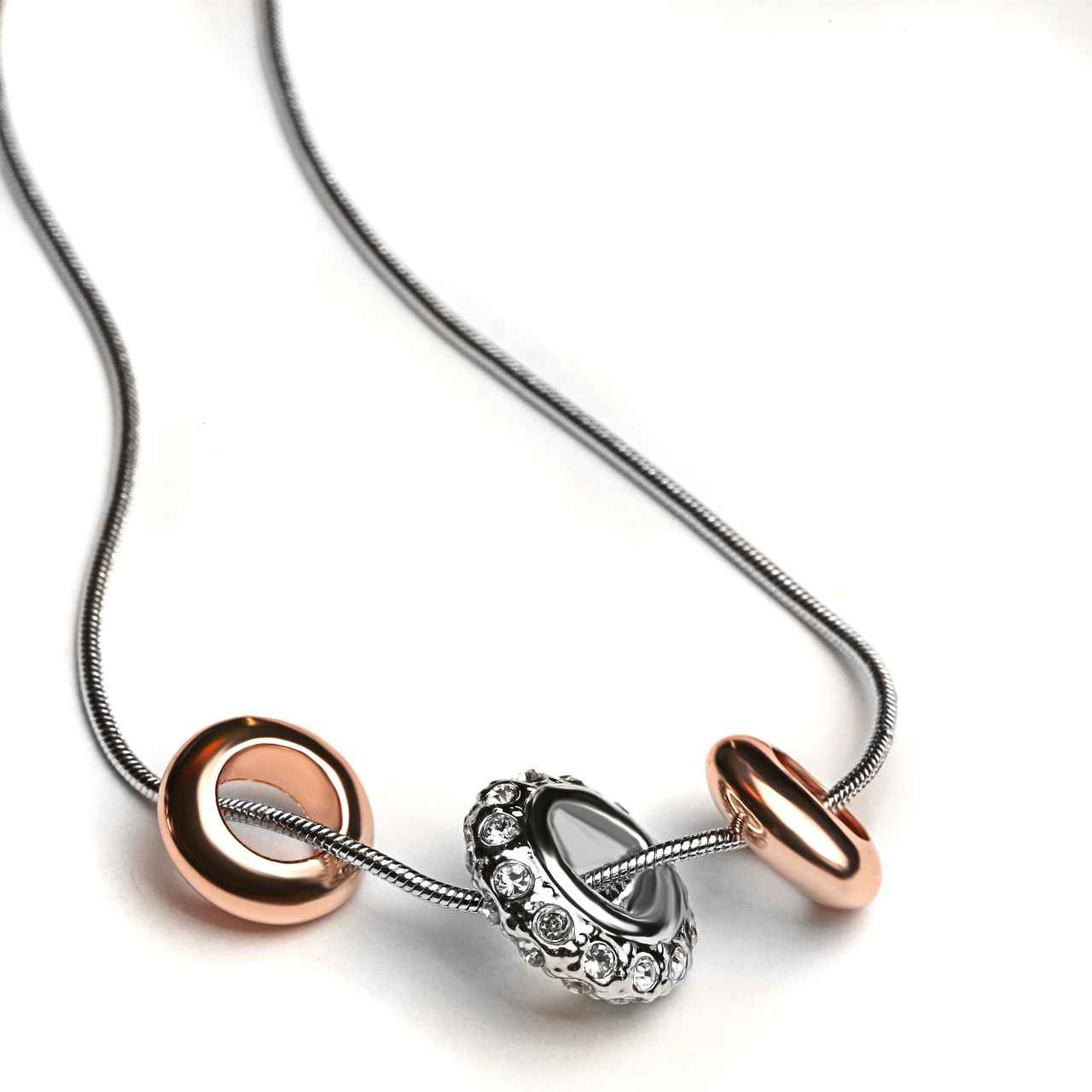
Can You Clean Jewelry at Home Effectively?
Cleaning jewelry at home can be a cost-effective solution to maintaining its sparkle and shine. While professional cleaning is ideal for deep cleaning and intricate care, there are several simple home methods that can help you keep your jewelry looking its best. The key is to use the right techniques and tools to avoid damage.
There are various DIY cleaning methods that you can employ at home, depending on the type of jewelry and the materials involved. Here are some popular techniques:
- Soapy Water Solution: Mix a few drops of mild dish soap with warm water. Soak your jewelry for a few minutes and gently scrub with a soft brush to remove dirt.
- Baking Soda Paste: For tarnished silver jewelry, create a paste of baking soda and water. Apply it gently with a cloth, rinse thoroughly, and dry.
- Vinegar and Baking Soda: For a deeper clean, soak your jewelry in a mixture of vinegar and baking soda. This can help remove stubborn stains.
Having the right tools can make a significant difference in the effectiveness of your cleaning efforts. Consider the following:
- Soft Brushes: Use a soft-bristled toothbrush or a jewelry cleaning brush to reach intricate designs without scratching.
- Microfiber Cloths: These are perfect for polishing and buffing your jewelry after cleaning.
- Non-Abrasive Cloths: Always use non-abrasive materials to avoid scratching delicate surfaces.
While cleaning jewelry at home can be effective, it’s important to take certain precautions to prevent damage:
- Know Your Materials: Different metals and gemstones have specific care requirements. For example, avoid using harsh chemicals on pearls or opals.
- Avoid Excessive Scrubbing: Be gentle when cleaning to avoid scratches or loosening settings.
- Test First: If unsure, test your cleaning method on a small, inconspicuous area first.
The frequency of cleaning depends on how often you wear your jewelry. A good rule of thumb is to clean pieces that you wear regularly every few weeks, while those worn less frequently can be cleaned every few months. Regular maintenance will help prevent the buildup of dirt and tarnish.
While home cleaning methods can maintain the appearance of your jewelry, they do not replace the thoroughness of professional cleaning. For pieces with intricate settings, valuable gemstones, or those that require specialized care, professional cleaning is recommended at least once a year. This ensures that your jewelry remains in excellent condition and can help identify any potential issues early.
In conclusion, while professional cleaning is ideal, simple home methods can effectively maintain jewelry’s appearance, provided one uses the right techniques and tools. By understanding the materials, employing safe cleaning methods, and taking precautions, you can keep your jewelry looking beautiful and extend its lifespan.
What DIY Methods Can You Use for Cleaning Jewelry?
When it comes to maintaining the beauty and longevity of your jewelry, DIY cleaning methods can be both effective and economical. Understanding how to properly clean your jewelry at home not only helps in preserving its appearance but also empowers you to take better care of your cherished pieces.
Common DIY methods for cleaning jewelry include:
- Mild Soap and Warm Water: A simple solution of mild dish soap mixed with warm water is one of the safest ways to clean most jewelry types. Soak your pieces for a few minutes, then gently scrub with a soft brush to reach intricate designs.
- Baking Soda Paste: For tarnished silver jewelry, a paste made from baking soda and water can work wonders. Apply the paste, let it sit for a few minutes, and then rinse thoroughly. This method is effective for removing tarnish without scratching the surface.
- Vinegar Solution: A mixture of vinegar and water can help in cleaning jewelry, especially gold and silver. Soaking your jewelry in this solution for about 15 minutes can remove dirt and restore shine.
- Toothpaste for Polishing: Non-gel, non-whitening toothpaste can be used to polish jewelry. Apply a small amount to a soft cloth and gently rub the piece. Rinse well to avoid any residue.
- Club Soda for Sparkle: Soaking your jewelry in club soda can help bring back its sparkle. The carbonation helps lift dirt and grime, making it an effective cleaning method.
To achieve the best results when cleaning jewelry at home, having the right tools is essential. Here are some recommended items:
- Soft Brushes: Use soft-bristled toothbrushes or makeup brushes to gently scrub your jewelry without causing scratches.
- Microfiber Cloths: These are ideal for polishing and drying your jewelry without leaving lint behind.
- Small Bowls: Use separate bowls for soaking different types of jewelry to prevent scratching or tangling.
- Soft Towels: For drying, use soft towels to avoid any potential damage during the drying process.
While DIY cleaning methods can be beneficial, it’s crucial to take certain precautions:
- Know Your Materials: Different metals and gemstones have varying levels of durability. For instance, pearls and opals should not be soaked in water as they can be damaged.
- Avoid Harsh Chemicals: Steer clear of bleach or ammonia-based cleaners, as these can cause irreversible damage to your jewelry.
- Test First: If you are unsure about a cleaning method, test it on a small, inconspicuous area first to ensure it doesn’t harm the piece.
By employing these DIY methods and taking the necessary precautions, you can keep your jewelry looking as stunning as the day you bought it. Regular maintenance not only enhances the appearance of your pieces but also extends their lifespan, ensuring that they remain cherished items for years to come.
What Precautions Should You Take When Cleaning Jewelry at Home?
When it comes to cleaning jewelry at home, it’s essential to take proper precautions to maintain the integrity and beauty of your pieces. Jewelry can be made from a variety of materials, each with its own specific needs. Understanding these needs and avoiding harsh chemicals is vital to prevent damage during home cleaning.
Different types of jewelry are crafted from various materials, including gold, silver, platinum, and gemstones. Each material has unique properties that dictate how it should be cleaned. For instance, soft stones like opals and pearls are particularly vulnerable to scratches and damage from harsh chemicals. Knowing the right approach for each material ensures that your jewelry remains in excellent condition.
Using aggressive cleaning agents can lead to irreversible damage to your jewelry. Chemicals such as bleach or ammonia can tarnish metals and dull the shine of gemstones. Instead, opt for gentle cleaning solutions that are specifically formulated for jewelry. This will help you avoid potential mishaps while ensuring your pieces remain vibrant and beautiful.
- Warm Soapy Water: A mixture of mild dish soap and warm water is often sufficient for cleaning most types of jewelry. Soak your pieces for a few minutes and gently scrub with a soft brush.
- Baking Soda Paste: For tarnished silver, a paste made from baking soda and water can effectively remove tarnish without damaging the metal.
- White Vinegar: This can be used for cleaning gemstones, but be sure to rinse thoroughly afterward to remove any residue.
To avoid scratches and damage, always use a soft cloth or a microfiber towel when cleaning your jewelry. Avoid using paper towels or rough fabrics that can cause abrasions. Additionally, ensure that you clean one piece at a time to prevent tangling or scratching against other pieces.
Utilizing the right tools can make a significant difference in the cleaning process. Here are some essential tools:
- Soft-bristled Brush: Ideal for reaching intricate designs and settings.
- Microfiber Cloth: Perfect for polishing and drying your jewelry without causing scratches.
- Jewelry Cleaning Cloth: Pre-treated cloths specifically designed for polishing metals.
Regular maintenance is key to keeping your jewelry looking its best. For everyday pieces, a light cleaning once a week can help prevent buildup. For less frequently worn items, a thorough cleaning every month is usually sufficient. Always inspect your jewelry for signs of wear or damage during cleaning.
- Avoid Hot Water: High temperatures can damage certain gemstones and settings.
- Don’t Use Toothpaste: While it may seem like a quick fix, toothpaste can scratch metals and gemstones.
- Skip the Ultrasonic Cleaners: Unless you are certain your jewelry is safe for ultrasonic cleaning, it’s best to avoid these devices at home.
By understanding the specific needs of your jewelry and employing safe cleaning practices, you can effectively maintain the beauty and longevity of your cherished pieces. Remember, when in doubt, consult a professional jeweler for advice tailored to your specific jewelry items.
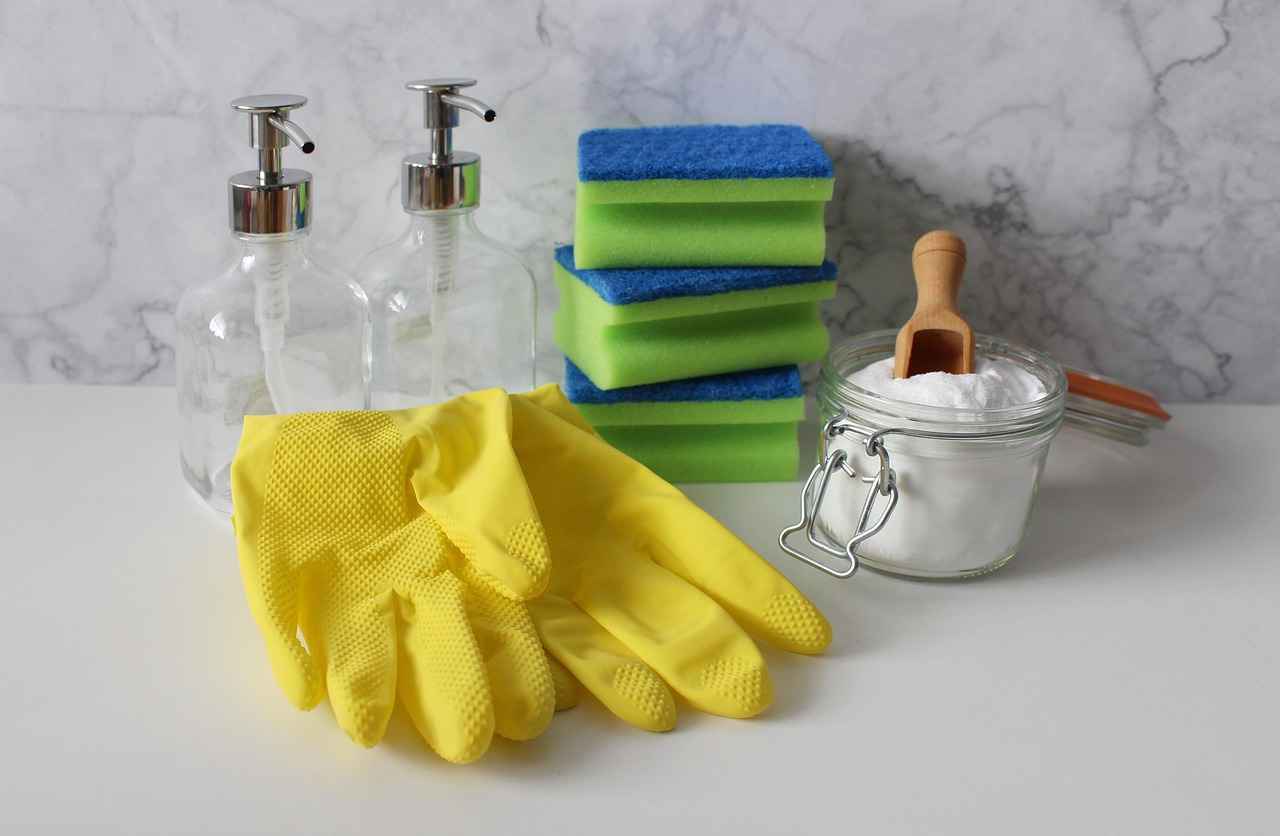
What Other Services Do Jewelers Offer for Jewelry Care?
When it comes to the care of your treasured jewelry, jewelers offer a wide array of services that go beyond just cleaning. These services are essential for maintaining the beauty, functionality, and value of your jewelry pieces. In this article, we will explore the various services jewelers provide, including repairs, resizing, and appraisals, and how they contribute to the overall care of your jewelry.
Jewelry can endure significant wear and tear over time, leading to damaged settings, broken clasps, or even lost stones. Repairs are crucial in restoring your jewelry to its original condition. Jewelers use specialized tools and techniques to fix issues that may seem minor but can lead to further damage if left unattended. For instance, a simple prong repair can prevent a lost diamond, saving you from the cost of replacement.
Jewelry resizing is often necessary due to changes in body size or personal preference. Resizing a ring, for example, involves either adding or removing material to ensure a perfect fit. Jewelers can provide this service safely, ensuring that the integrity of the piece is maintained. This is particularly important for heirloom pieces, where preserving the original design is essential.
Jewelry appraisals are vital for understanding the value of your pieces, especially for insurance purposes. A jewelry appraisal provides an expert evaluation of your jewelry’s worth, taking into account factors like the quality of materials, craftsmanship, and market trends. Regular appraisals can help you keep your insurance updated and protect your investment.
In addition to repairs and resizing, jewelers also offer professional cleaning services. Regular cleaning is essential to remove dirt and tarnish that can accumulate over time. Jewelers have access to advanced cleaning techniques, such as ultrasonic cleaning and steam cleaning, which can rejuvenate your jewelry without causing damage.
Beyond basic cleaning and repairs, jewelers often provide additional services such as polishing and rhodium plating. Polishing removes scratches and enhances the shine of your jewelry, while rhodium plating can restore the luster of white gold pieces. These services can significantly improve the appearance of your jewelry, making it look brand new.
For those looking to create a unique piece, many jewelers offer custom design services. This allows you to collaborate with a jeweler to create a piece that reflects your personal style and preferences. Custom designs can also be a great way to repurpose old jewelry, giving it a new life while preserving sentimental value.
When selecting a jeweler for these services, consider their experience, certifications, and customer reviews. A reputable jeweler will be transparent about their processes and provide a clear understanding of the services they offer. This ensures that your jewelry is in good hands, whether for cleaning, repairs, or custom work.
In summary, the comprehensive care of your jewelry involves much more than just cleaning. With services like repairs, resizing, appraisals, and custom designs, jewelers play a vital role in maintaining the beauty and value of your cherished pieces. Regularly utilizing these services can help ensure that your jewelry lasts for generations to come.
Frequently Asked Questions
- What is the best method for cleaning my jewelry at home?
The best way to clean your jewelry at home is by using a mixture of mild soap and warm water. Soak your pieces for a few minutes, then gently scrub with a soft brush to remove dirt and grime.
- How often should I have my jewelry professionally cleaned?
It’s generally recommended to have your jewelry professionally cleaned every six months to a year. This helps maintain its shine and overall condition, especially if you wear it regularly.
- Is ultrasonic cleaning safe for all types of jewelry?
Not all jewelry can be cleaned using ultrasonic methods. While it’s effective for many pieces, be cautious with soft stones like pearls, which can be damaged by this technique.
- What should I do if my jewelry has stubborn tarnish?
If you’re facing stubborn tarnish, consider using a specialized chemical cleaner designed for your jewelry type. Always follow the instructions carefully to avoid any damage.
- Can I use regular household cleaners on my jewelry?
No, it’s best to avoid regular household cleaners as they can contain harsh chemicals that may damage your jewelry. Stick to products specifically designed for jewelry cleaning.

